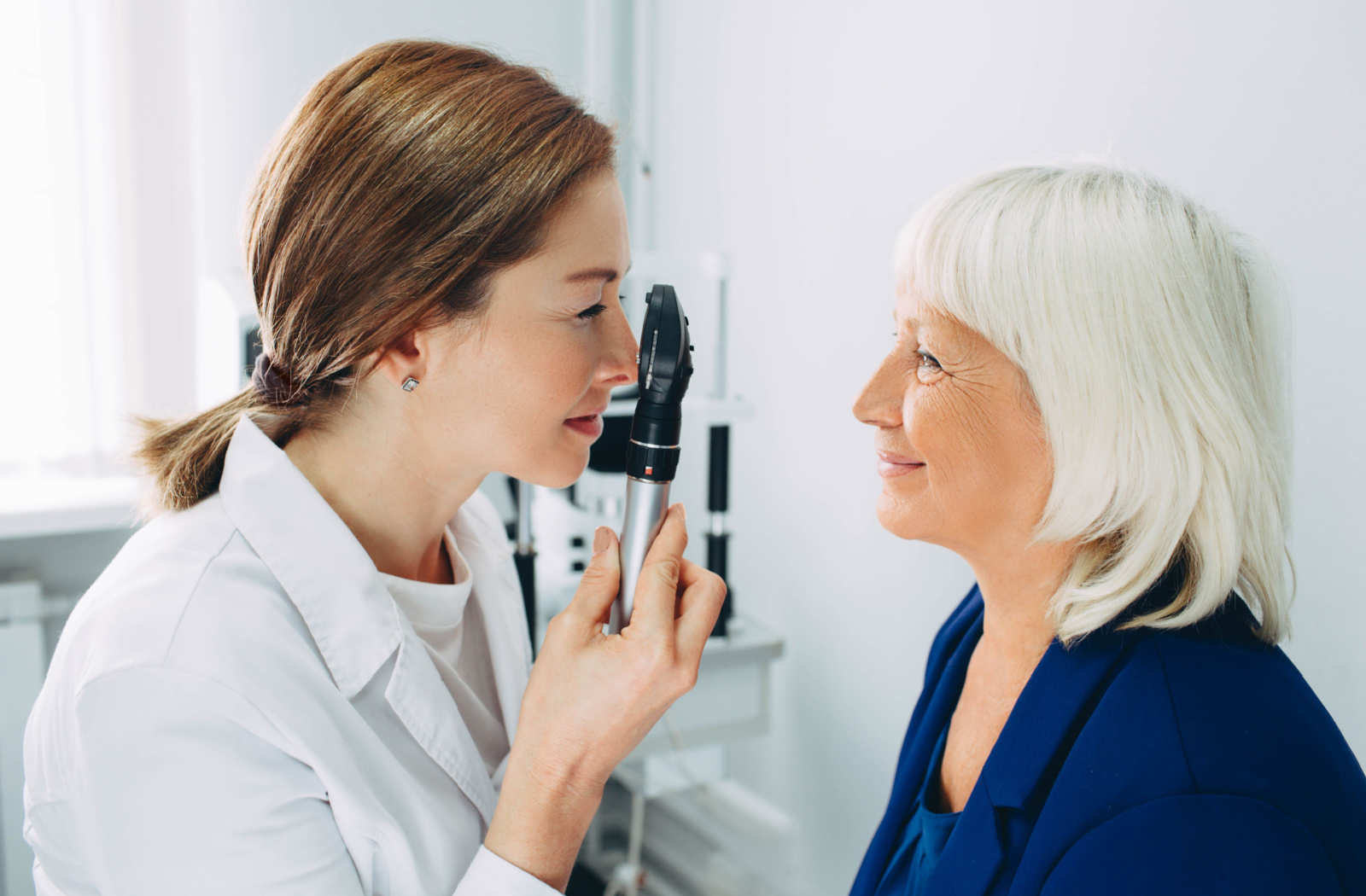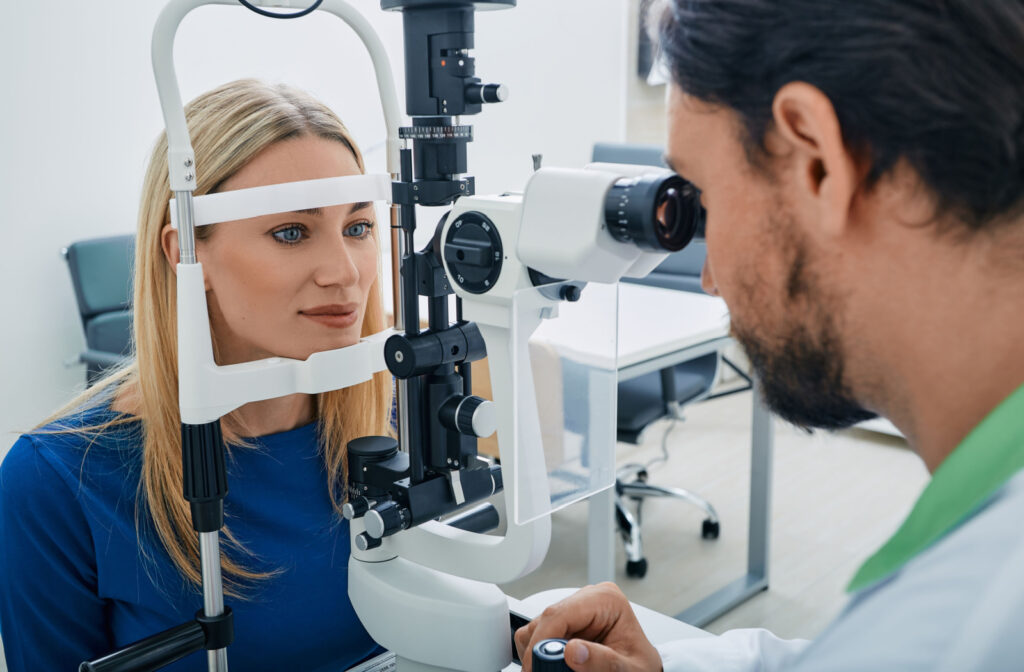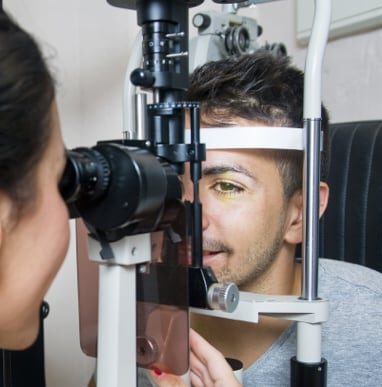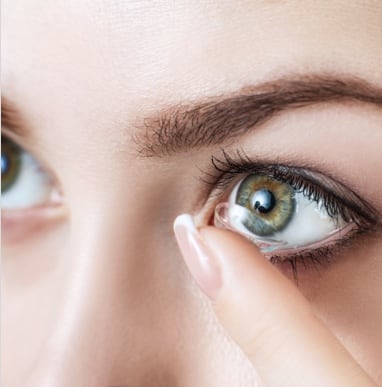Eye exams are crucial to maintaining good eye health. They can detect vision changes, which helps determine if you need glasses or contact lenses to see clearly.
Besides that, eye exams also identify various eye diseases and conditions, such as age-related macular degeneration, diabetic eye disease, and glaucoma. Your eye doctor will recommend how often you should have an eye exam based on your eye health and risk.
What Is an Eye Exam?
An eye exam is a comprehensive evaluation of your eye health. During an exam, your eye doctor will examine the eye’s physical structure and your eye’s ability to see clearly. They may also take images of your eyes to view any changes over time. Additionally, eye exams can determine if you have any underlying eye diseases or health conditions and monitor your symptoms.
Different Types of Eye Exams
Generally, your eye doctor will conduct a routine comprehensive eye exam, evaluating general eye health, vision, and clarity. However, they may perform a different eye exam based on individual needs and your risk for developing certain eye diseases.
Children’s Eye Exams
Children’s vision can change due to their rapid eye growth. For this reason, they can benefit from children’s eye exams from a young age and regularly during their school years. Children’s eye exams can help detect early signs of myopia (nearsightedness) and problems with vital visual skills needed for learning.
Dilated Eye Exam
A dilated eye exam involves using eye drops to dilate or widen your pupils to provide a more detailed view of the back of the eye. Depending on your risk for eye disease, your doctor will inform you how often you need a dilated eye exam.
Diseases Detected in Eye Exams
Many eye diseases and conditions present no warning signs or early symptoms. Regular eye exams can monitor eye changes and detect many diseases and conditions.
Age-Related Macular Degeneration
Age-related macular degeneration (AMD) is a chronic condition that causes the gradual loss of the central vision and has no early symptoms. AMD occurs due to damage to the macula, a part of the retina (the light-sensitive tissue at the back of the eye). The macula is part of the eye responsible for sharp central vision.
Your eye doctor can look for signs of AMD with a dilated eye exam. They may also do retinal imaging with Optos fundus photography, which takes detailed images of the inside of the eye.
Diabetic Eye Disease
People with diabetes are more at risk of developing diabetic eye disease because high blood sugar can cause damage to the blood vessels in the eye. Early detection of diabetic retinopathy and diabetic macular edema with annual diabetic eye exams can help prevent vision loss.
Changes to the back of the eye don’t always present with visual symptoms. Diagnostic technology during a diabetic exam can capture images of the retina and blood vessels to look for signs of damage.
Glaucoma
Glaucoma is a group of eye diseases that affect the optic nerve at the back of the eye, which sends electrical impulses from the eye to the brain creating the images we see. Glaucoma results when pressure builds up in the eye, causing damage to the optic nerve.
Glaucoma symptoms can include losing your peripheral or side vision. An eye exam can help your eye doctor look at the optic nerve and measure the pressure in the eye.

Cataracts
A cataract is the clouding of the eye’s natural lens, the clear part of the eye that focuses light. As a cataract progresses, it leads to blurry or hazy vision. Your eye doctor can dilate your eyes and check for a cataract.
Other Health Diseases Detected by an Eye Exam
Eye exams can help detect other health conditions and diseases, such as:
- High blood pressure
- Heart disease
- High cholesterol
- Brain tumor
- Aneurysm
- Cancer
- Multiple sclerosis
- Rheumatoid arthritis
- Stroke
How Often to Have Eye Exams
The frequency of eye exams depends on the individual’s age, risk factors, and overall eye health. Adults should have annual eye exams. Children should have an eye exam once between 0 and 2 years, once between 3 and 5 years, and annually from 6 to 17 years. Eye exams can be more frequent for those with risk factors, such as a family history of eye disease, high blood pressure, or diabetes.
Protection Against Eye Diseases
Eye health is crucial for your overall health and should be taken care of just like the rest of your body. Eye exams are essential in maintaining good eye health as they detect early vision changes and can identify various diseases and conditions before they progress to vision loss.
As you maintain your healthy lifestyle, don’t forget to book an appointment with Vision Care Center or visit us if you experience vision changes.












